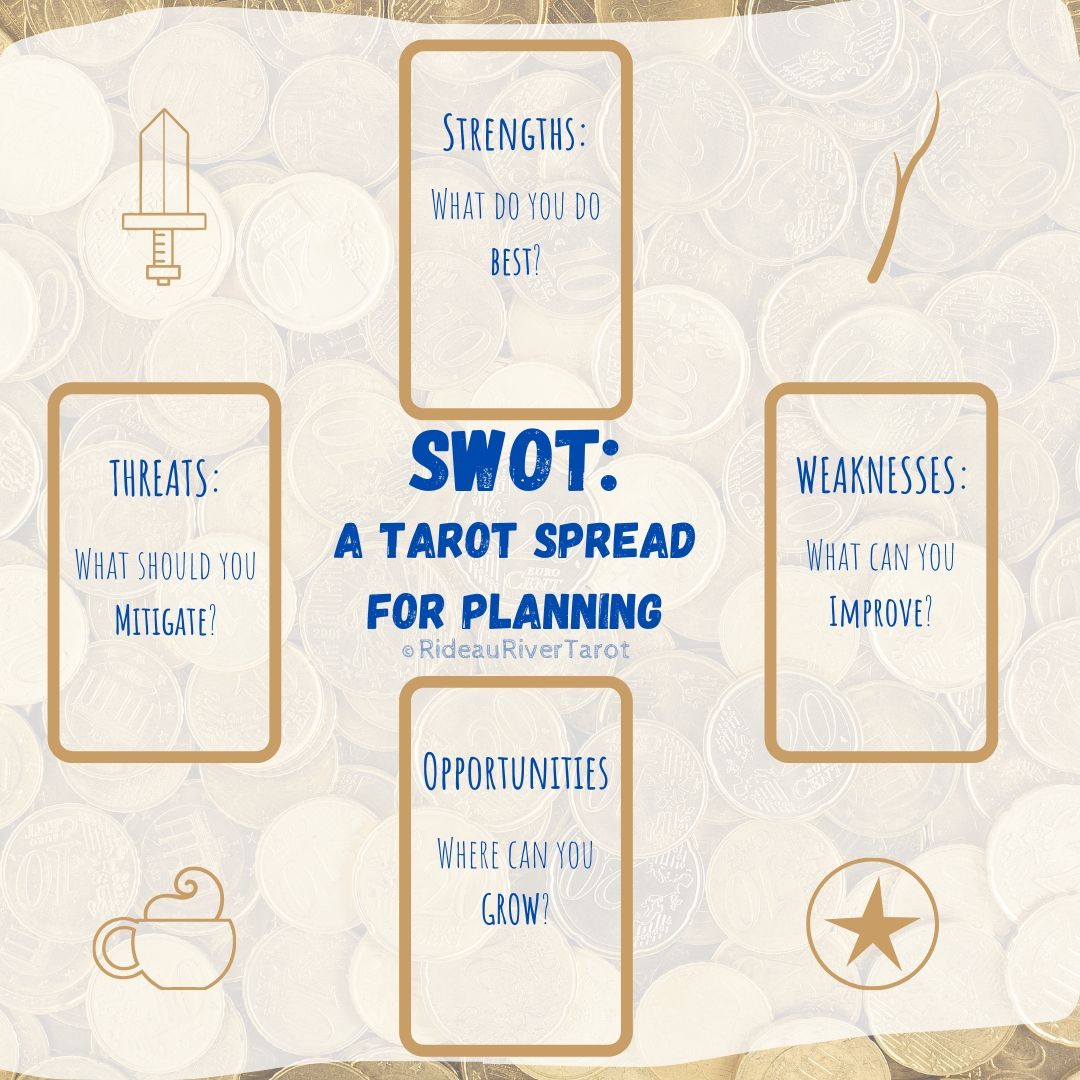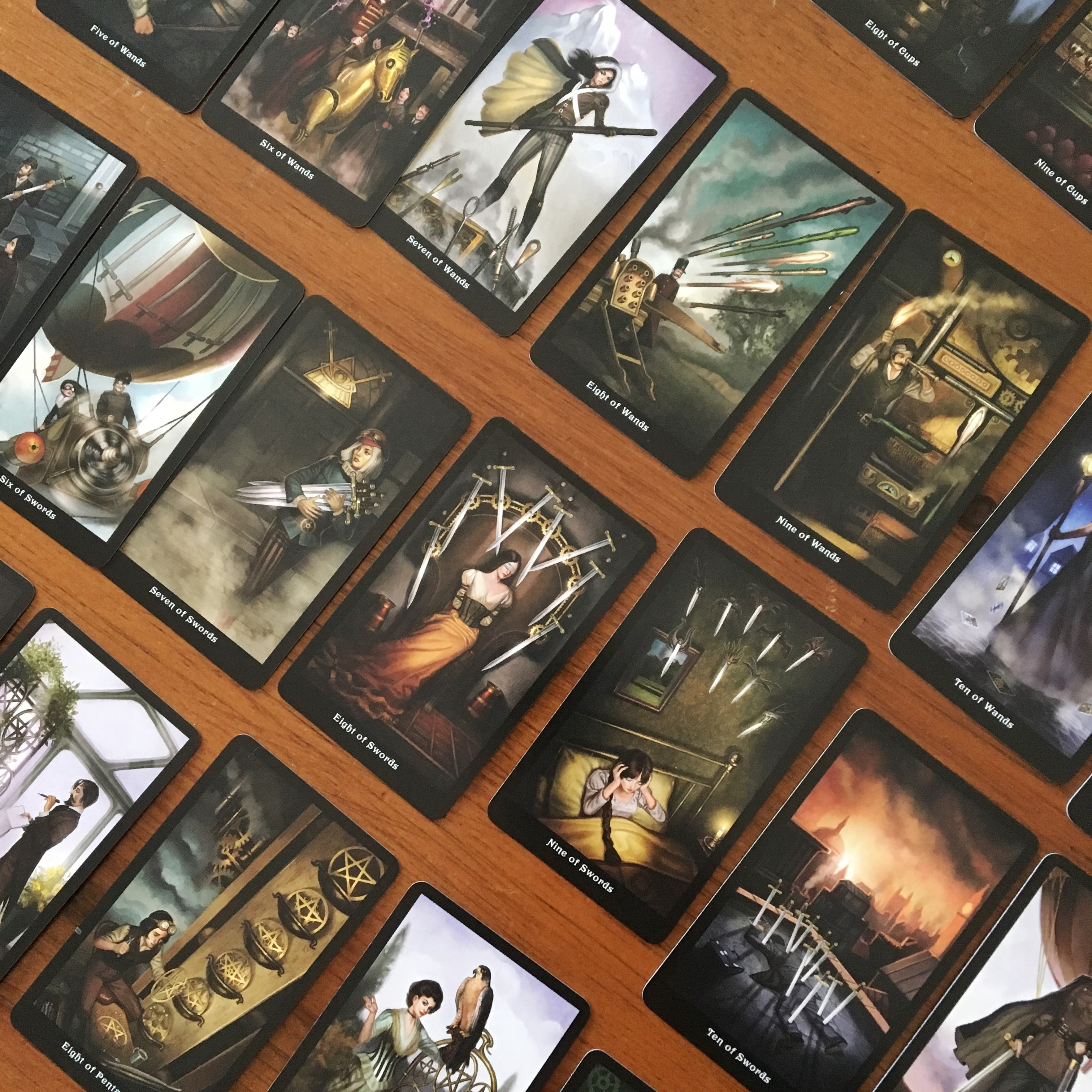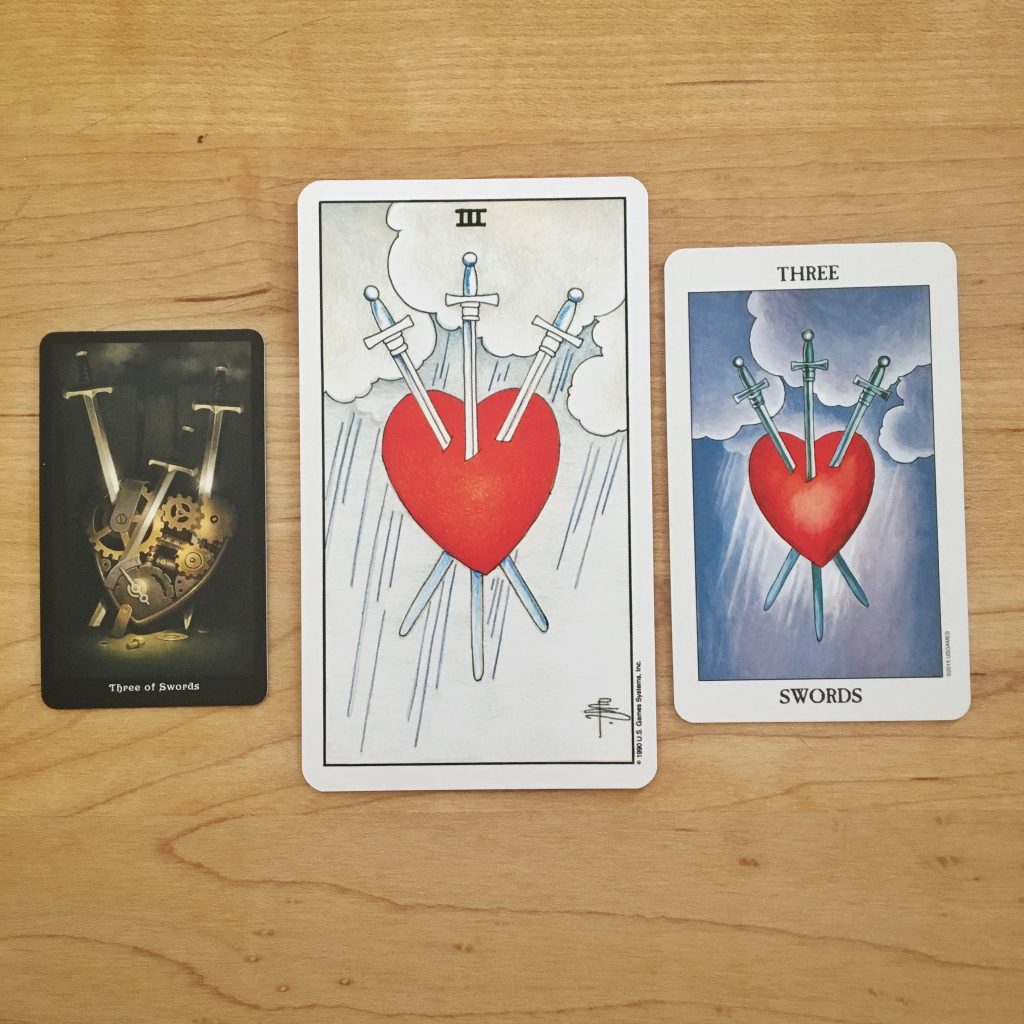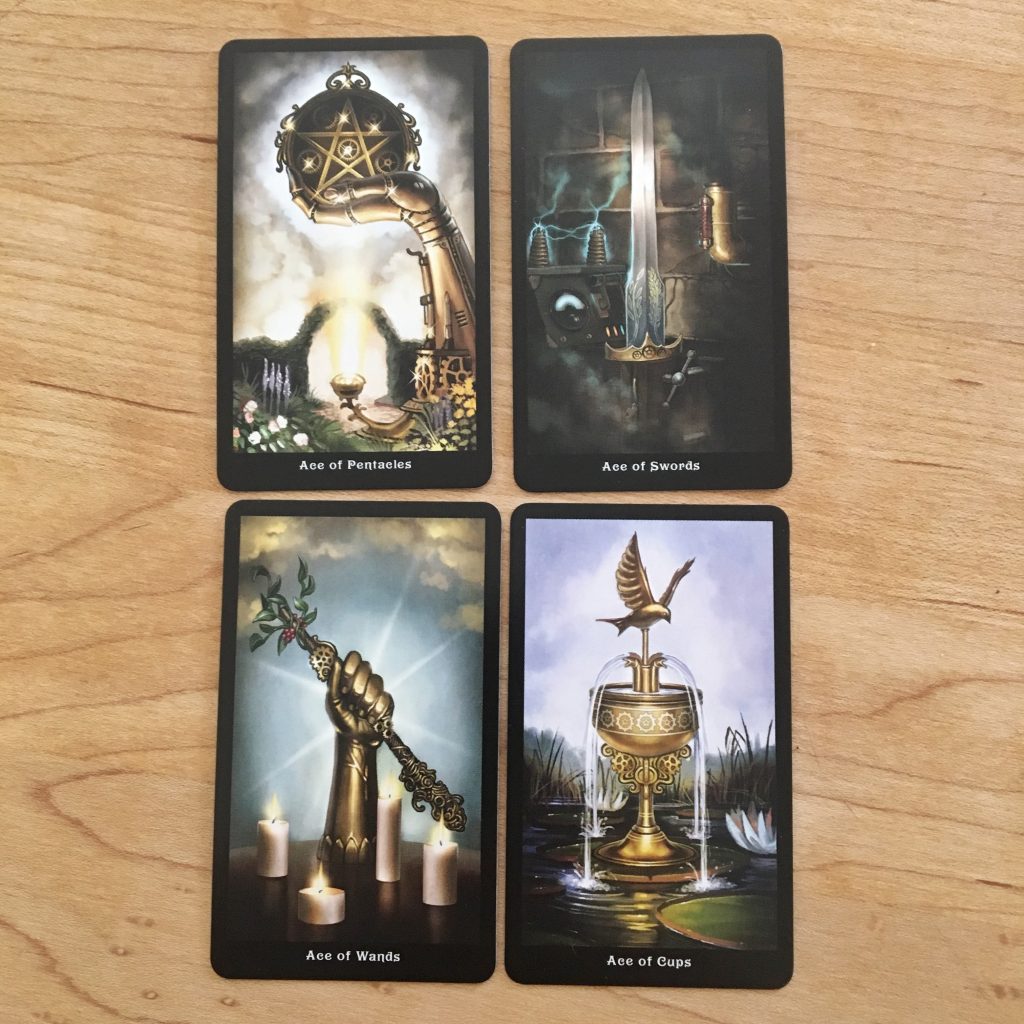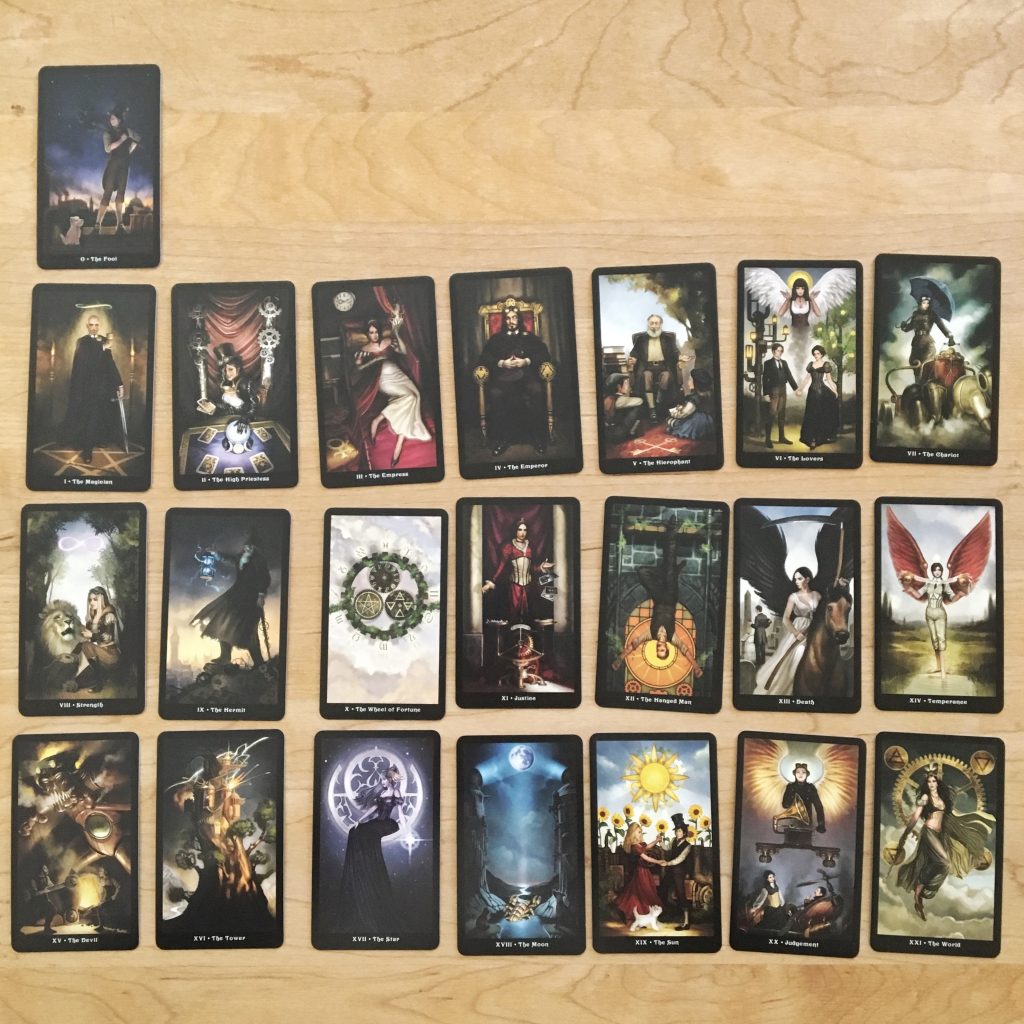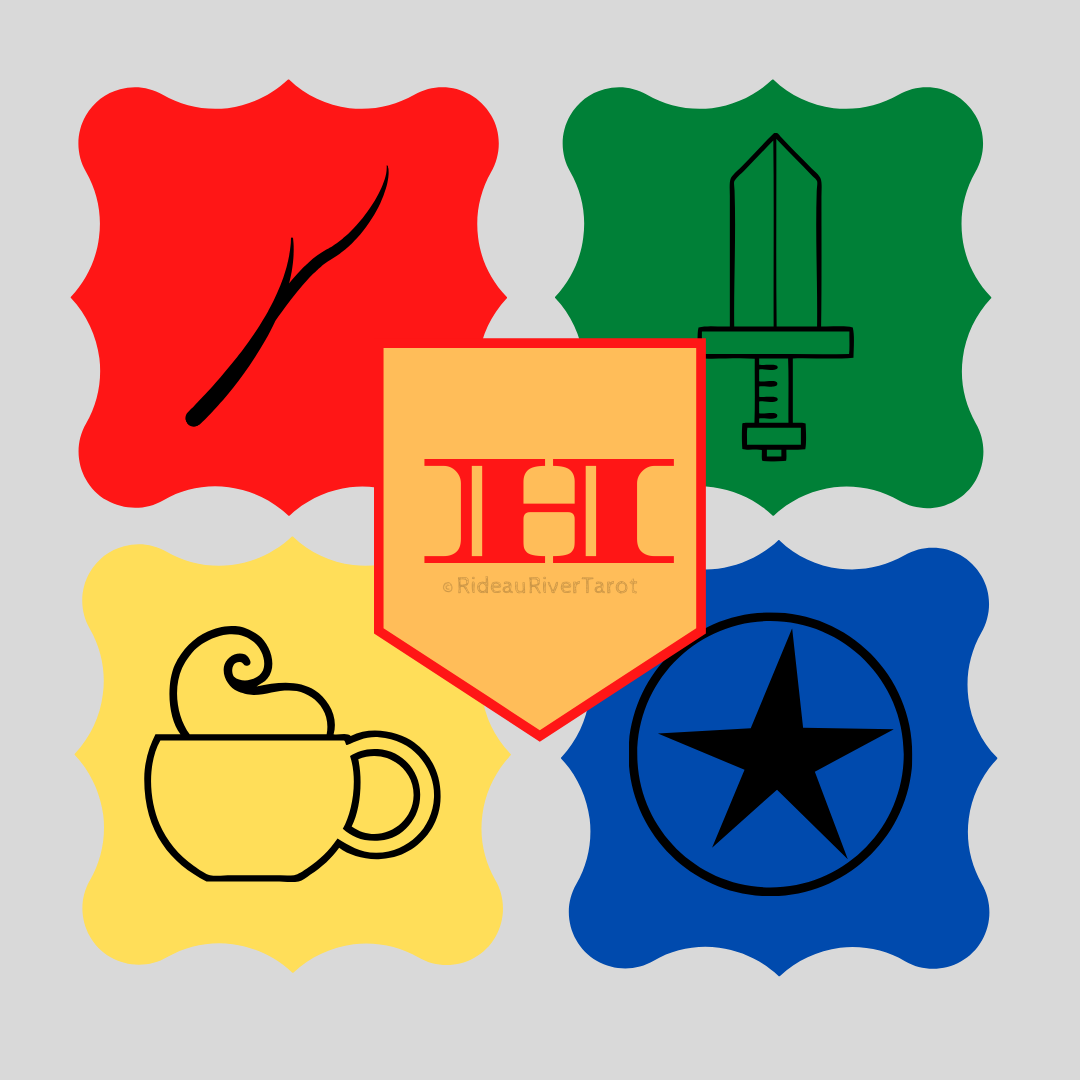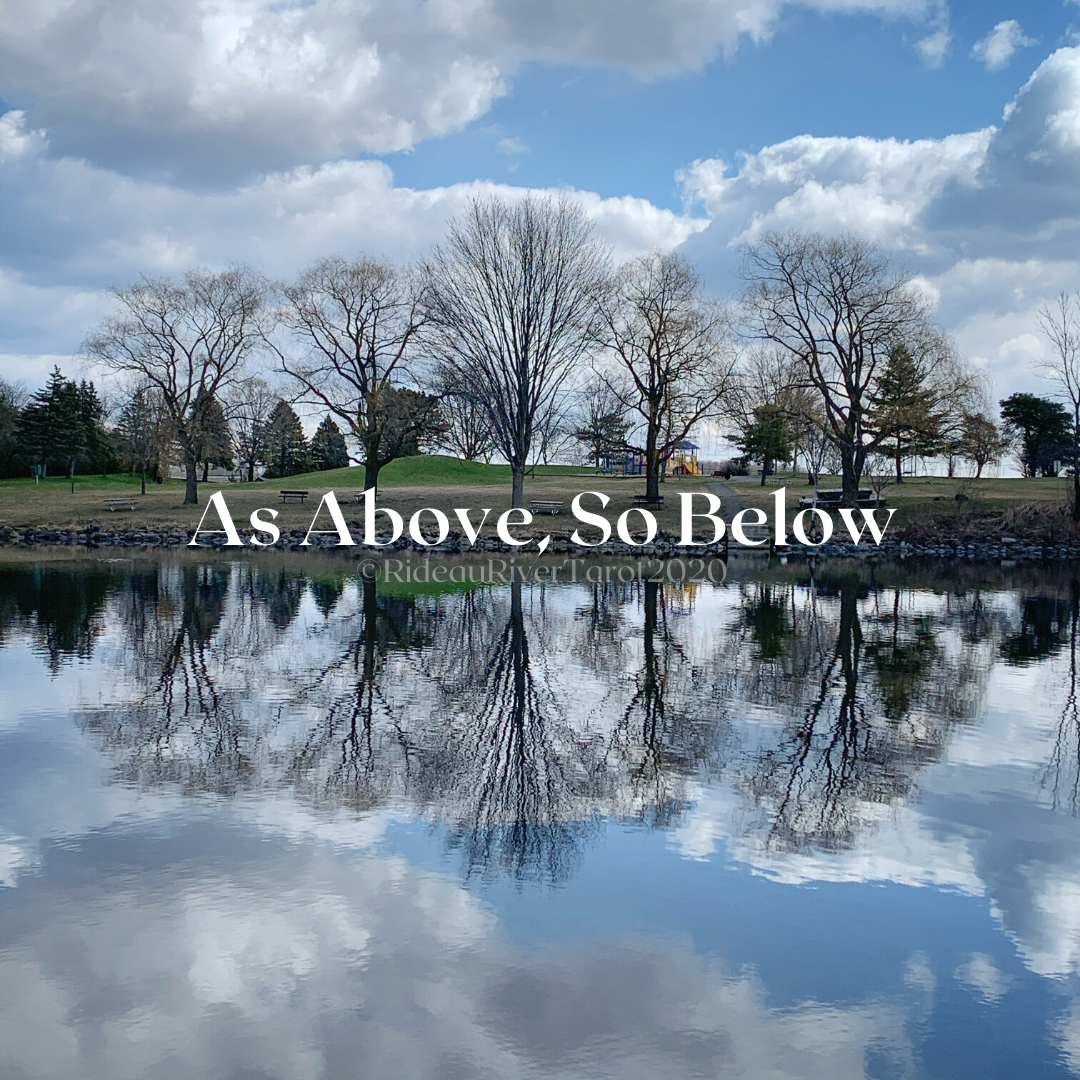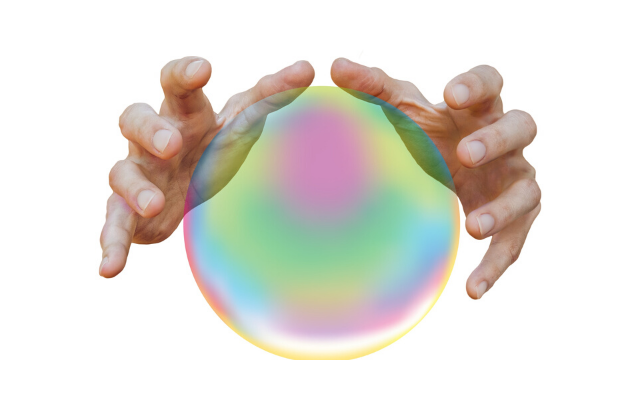A SWOT analysis is a classic business tool to help you visualize the important aspects of a decision or project for strategic planning. SWOT stands for Strengths, Weaknesses, Opportunities and Threats. Strengths and opportunities are things you consider favorable and within your control, while weaknesses and threats are unfavorable and dictated by external forces.
The SWOT analysis offers insight on what you’re doing well, where challenges or obstacles may lie, and options for how to use that information moving ahead. You could run a SWOT analysis on virtually anything: a company, an idea, a product, or even yourself; it can be a great tool for personal insight. In a traditional SWOT analysis, you brainstorm points under each category, but here we are looking to the tarot cards to provide the insight. Why use tarot cards for a SWOT analysis? Tarot cards can help you see things from a new perspective, and give you options you might not have come up with on your own. Tarot cards help to deepen your connection with your intuitive, inner wisdom, and might help you see through blind spots that would otherwise inhibit you.
The SWOT Tarot Spread comprises four cards: Strengths, Weaknesses, Opportunities, and Threats. Shuffle the cards while thinking about the situation you are analysing. Draw the cards as you see fit; you may wish to make four piles and choose the top card from each pile, or fan the cards out and pick four at random, or cut the deck and draw the top four cards. Regardless of how you draw the cards, ensure you decide before turning over each card which category that card will represent.
Strengths set you apart from others and are your building blocks to success. What are you naturally good at or what skills have you developed? What do others see as your strength? What are your unique talents or gifts?
Weaknesses are areas that need your attention to improve, so they don’t become obstacles to your progress. What could you improve? Where do you have access to fewer resources than others? What might others identify as your weakness?
Opportunities are the external factors you can pursue to move ahead in your journey. What opportunities are open to you? How can you turn your strengths into opportunities?
Threats are the factors or obstacles that might prevent you from reaching your goals. What threats could harm you or prevent success? How could your weaknesses threaten your progress?
So now that you’ve done your spread, what should you do with it? Insight without action won’t lead you forward on your journey. Match up your strengths to your opportunities to make an action plan, and consider ways to improve weaknesses in order to mitigate potential threats. Turn your opportunities into goals, and set up a step-by-step approach so you can get from here to there. Make each milestone in your path meaningful and measurable. And don’t forget to celebrate your success!
If you use this spread, I’d love to hear how it worked out for you. And I’d be happy to do a tarot card SWOT analysis for you, for a situation you are facing, or for your business. Readings will be delivered by email, and the fee for this type of reading is $20 Cdn. Contact me for details!

